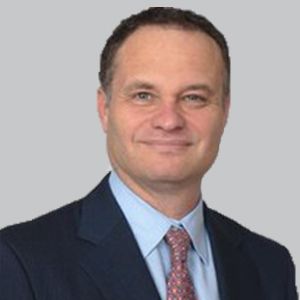News
Article
Increased New-Onset Cardiovascular Risk Observed in Narcolepsy
Author(s):
The findings confirmed and expanded upon existing literature by demonstrating that the incidence rates of multiple cardiovascular events, including stroke, heart failure, and cardiovascular disease, are significantly higher in patients with narcolepsy.
Rami H. Ben-Joseph, PhD

A recently published retrospective cohort study using administrative claims data from 2014 to 2019 revealed that individuals with narcolepsy are at an increased risk of new-onset cardiovascular events. These findings highlight the importance of considering cardiovascular risk when weighing treatment options.
The data, originally presented at the 2022 American Academy of Neurology (AAN) Annual Meeting, included 12,816 patients with narcolepsy and 38,441 controls, matched based on cohort entry date, age, sex, geographic region, and insurance type. Published in the journal of Sleep, adjusted analyses demonstrated a higher risk of new-onset cardiovascular risks such as stroke (HR, 1.71; 95% CI, 1.24-2.34) heart failure (HR, 1.35; 95% CI, 1.03-1.76) and ischemic stroke (HR, 1.67; 95% CI, 1.19-2.34), among other findings.
Led by Rami H. Ben-Joseph, PhD, executive director of Global Big Data Real-World Evidence, Jazz Pharmaceuticals, the cohort was comprised of adults with at least 2 outpatient claims containing a narcolepsy diagnosis, of which at least 1 was non-diagnostic. Otherwise known as CV-BOND, patients with narcolepsy had more comorbidities at baseline compared with matched non-narcolepsy controls. The largest differences occurred in sleep apnea (33.8% vs 2.2%), hypersomnia (31.7% vs 0.2%), mood disorders (25.6% vs 6.2%), anxiety disorders (21.7% vs 7.2%), and headache/migraine (17.3% vs 4.9%; P <.001).
Results of the study showed that patients with narcolepsy were at an increased risk for other major adverse cardiac events (MACE; HR, 1.45; 95% CI, 1.20-1.74), grouped instances of stroke, atrial fibrillation or edema (HR, 1.48; 95% CI, 1.25-1.74), or cardiovascular disease (CVD; HR, 1.30; 95% CI, 1.08-1.56). HRs for myocardial infarction outcome were incomplete because of an insufficient number of events. Overall, the crude incidence rates of new-onset cardiovascular events per 1000 person-years were higher in patients with narcolepsy than matched controls (all <.05 except for myocardial infarction).
READ MORE: Clinical Improvements in Cataplexy Seen Through Mazindol Extended-Release Treatment
At AAN 2022, Ben-Joseph told NeurologyLive®, "Conversations about cardiovascular health are often held between a patient and a primary care physician and these discussions should occur regularly with neurologists as well. The relationship between sleep disorders, and sleep-related disorders, such as sleep apnea, and poor cardiovascular functioning is well-established. We observed a similar directionality and magnitude of risk when measuring incident cardiovascular events with narcolepsy as has been reported for obstructive sleep apnea patients, many of whom also have comorbid sleep disorders."
He added, "As some chronic cardiovascular conditions are asymptomatic, rigorous educational programs to improve disease surveillance in vulnerable populations could optimize patient care."
A sensitivity analysis compared outcomes between individuals with type 1 (NT1; n = 9868; 77%) and type 2 (NT2; n = 2948; 23%) narcolepsy. Among patients with NT1, adjusted HRs only demonstrated increased risk of grouped instances of stroke, atrial fibrillation, or edema in the narcolepsy cohort relative to non-narcolepsy matched controls (adjusted HR, 1.47; 95% CI, 1.01-2.13). In the NT2 group, adjusted HRs showed an increased risk of new-onset cardiovascular events compared with controls, including any stroke (HR, 1.78; 95% CI, 1.25-2.53), heart failure (HR, 1.34; 95% CI, 1.00-1.79), ischemic stroke (HR, 1.70; 95% CI, 1.16-2.49), MACE (HR, 1.43; 95% CI, 1.16-1.76); grouped instances of stroke, atrial fibrillation, or edema (HR, 1.48; 95% CI, 1.23-1.78); or CVD (HR, 1.32; 95% CI, 1.08-1.61).
"The narcolepsy community lives with complex and severe conditions, and we’ve been working for many years to grow our understanding of the best way to manage this disorder,” Ben-Joseph continued. “More needs to be done to help people experiencing symptoms identify the condition and seek a diagnosis, and progress can be made to ensure healthcare providers are considering a patients’ holistic health. Total risk value, including the risk of future CV events, must be considered."





